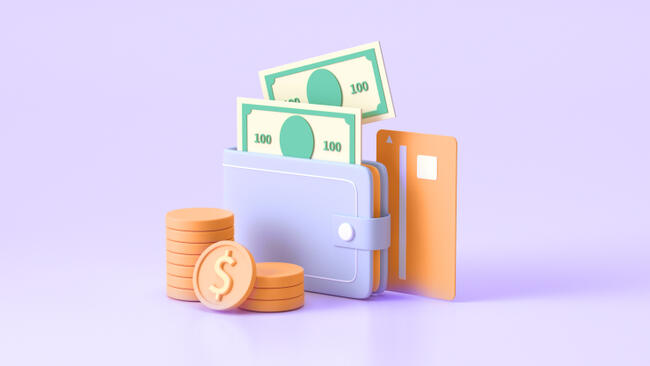Stagflation talk is picking up. Here’s what driving the conversation
Stagflation talk is picking up. Here’s what driving the conversation
Inflation and economic growth conditions are on the radar, but this isn’t the 1970s
Stagflation talk is picking up. Here’s what driving the conversation
Inflation and economic growth conditions are on the radar, but this isn’t the 1970s


Listen
·Key takeaways
- Economists are watching tariff-related prices, inflation, and unemployment for signs of stagflation.
- If stagflation emerges, few expect a return of 1970s conditions that were severe and prolonged.
- Consumers aren’t immune from stagflation but can help protect themselves by boosting savings and being vigilant.
Stagflation has resurfaced in financial conversations and headlines in recent months as economists consider the risks of stubborn inflation and slower growth.1
Often associated with the 1970s, the term stagflation combines the words “stagnant” and “inflation” and refers to an economy characterized by rising prices, low economic growth, and high unemployment.
For Gen X and Baby Boomers, stagflation might conjure up images of bell-bottom jeans, long gas lines, double-digit interest rates, and a decade-long sense of unease and economic uncertainty.2
Today’s economy is very different, and central banks have more sophisticated tools to manage inflation and other stagflation factors. That might be why some economists are throwing out less severe variations of the term such as “stagflation-lite,” or “stagflationary impulse” — among several others.3,4
Read more: Stagflation: What it is and how to prepare
Factors worth watching
But the minutes from the Federal Reserve's May 6-7, 2025 meeting do reveal attentiveness to stagflation risks, with particular concern about the impact that U.S. tariffs could create on prices and supply chains.5
Factoring in weakening economic growth projections and an anticipated rise in unemployment through 2027, the Fed signaled a cautious approach before deciding on further interest rate cuts. The benchmark rate has remained in the range of 4.25%-4.5% since December.6
U.S. economic growth is expected at 1.3% this year, down from a 2% forecast at the beginning of 2025.7 Meanwhile, job growth slowed slightly last month and unemployment rate was unchanged at 4.2%.
Elsewhere, “core” consumer prices — the Federal Reserve’s preferred inflation gauge that excludes more volatile food and energy costs — ticked up 0.2% in May and is 2.7% higher than a year ago, modestly higher than the Fed’s 2% target.8
Read more: Eggs fall, bananas rise and sewing supplies soften in May inflation report
Today’s stagflation talk is different than the 1970s
Those conditions have made “stagflation” a buzzword again among some policymakers and private economists. Slower growth, higher prices and the potential for tariff-related price surges and supply disruptions have created a “triangle of uncertainty” according to the Federal Reserve Bank of Chicago.9
But very few economists are predicting a return to 1970s-style stagflation that tested three presidential administrations and dragged into the early 1980s.10 The period was marked by 10% unemployment, high single-digit inflation, double-digit interest rates, and other stark conditions that are much more severe than today.11
The economy is also very different in countless ways. Conditions in the 1970s crisis were driven at least in part by the surge in crude oil prices due to an OPEC embargo, while the U.S. today is a leading energy producer and much more diversified in its sources.12 Global supply chains, digital technologies, and automation have also given U.S. companies far greater flexibility to respond to shocks and disruptions.13
Still, today’s conditions are causing some to pause and consider whether stagflation might be a possibility, though perhaps in a briefer and less severe form.14
What consumers need to know about stagflation
The latest data from the Federal Reserve and the Empower Personal DashboardTM paints a nuanced picture of American household wealth, with Americans seeing modest net worth gains in the first quarter of 2025 but also signaling potential consumer restraint. Household debt grew cautiously by 1.9%.
Consumers wouldn’t be immune from any stagflation scenario, but they can take steps to make themselves less vulnerable. Solid finances coupled with highly valued job skills can hedge against both rising prices and unemployment, financial professionals say.15
Others might consider holding back on some discretionary spending and big-ticket items if prices are climbing and the economy isn’t keeping pace. It’s also ideal to pay down debt — especially credit card balances or other high-interest debt.16
Many financial professionals recommend having a fund to cover between three to six months' worth of basic living expenses and bills, and some recommend even more savings.17
Financial professionals say that a stagflation scenario wouldn’t be an ideal time to quit a job or change employers for only a modest pay increase. Workers looking to increase marketability during uncertain conditions might want to consider mentorships, cross-training opportunities, expanding their skills, and other career add-ons.18
Stagflation isn’t a foregone conclusion but it is a risk that some economists see.19 Staying alert to the factors like inflation and economic growth is a smart move, especially as the economic picture unfolds.20
Read More: Where the job market is heading in 2025: 7 trends to anticipate
Get financially happy
Put your money to work for life and play
1 CNN, “So, what is stagflation, anyway, and why is it so scary?,” March 2025.
2 Time, “Why You Probably Don’t Need to Worry About 1970s-Style Stagflation,” March 2022.
3 Reuters, “Stagflation on the radar for the US economy, but no repeat of the '70s,” March 2025.
4 Reuters, “JPMorgan sees tariff-induced US 'stagflationary' slowdown in 2025,” June 2025.
5 The Wall Street Journal, “The Fed Forecasts Stagflation,” May 2025.
6 Bloomberg, “Fed Well Positioned to Wait for Clarity on Outlook, Minutes Say,” May 2025.
7 Reuters, “JPMorgan sees tariff-induced US 'stagflationary' slowdown in 2025,” June 2025.
8 The New York Times, “The Fed’s Preferred Inflation Gauge Was Slightly Hotter in May, as Spending Cooled,” June 2025.
9 Politico, “Fed official calls tariffs ‘stagflationary shock,’ in stark comment on Trump policy,” June 2025.
10 Politico, “This Economic Paradox Nearly Took Down Three Presidents. Is Donald Trump Next?” April 2025.
11 CNN, “So, what is stagflation, anyway, and why is it so scary?,” March 2025.
12 AP, “Middle East conflict highlights how vastly the global energy supply has changed in recent years,” June 2025.
13 The Wall Street Journal, “Here’s How Supply Chains Are Being Reshaped for a New Era of Global Trade,” April 2023.
14 Axios, “The s-word rippling through Wall Street and Main Street,” March 2025.
15 MarketWatch, “Stagflation fears are rising. Here’s how to protect your job and retirement savings,” April 2025.
16 Forbes, “As Stagflation Fears Rise, Prepare For Higher Prices And Unemployment,” April 2025.
17 MarketWatch, “Your cash emergency fund probably isn’t going to cut it in this economy,” January 2025.
18 MarketWatch, “Stagflation fears are rising. Here’s how to protect your job and retirement savings,” April 2025.
19 Reuters, “JPMorgan sees tariff-induced US 'stagflationary' slowdown in 2025,” June 2025.
20 The Wall Street Journal, “Get Ready for Inflation to Matter in Markets Again,” June 2025.
RO4633705-0725
The content contained in this blog post is intended for general informational purposes only and is not meant to constitute legal, tax, accounting or investment advice. You should consult a qualified legal or tax professional regarding your specific situation. No part of this blog, nor the links contained therein is a solicitation or offer to sell securities. Compensation for freelance contributions not to exceed $1,250. Third-party data is obtained from sources believed to be reliable; however, Empower cannot guarantee the accuracy, timeliness, completeness or fitness of this data for any particular purpose. Third-party links are provided solely as a convenience and do not imply an affiliation, endorsement or approval by Empower of the contents on such third-party websites. This article is based on current events, research, and developments at the time of publication, which may change over time.
Certain sections of this blog may contain forward-looking statements that are based on our reasonable expectations, estimates, projections and assumptions. Past performance is not a guarantee of future return, nor is it indicative of future performance. Investing involves risk. The value of your investment will fluctuate and you may lose money.
Certified Financial Planner Board of Standards Inc. (CFP Board) owns the certification marks CFP®, CERTIFIED FINANCIAL PLANNER™, CFP® (with plaque design), and CFP® (with flame design) in the U.S., which it authorizes use of by individuals who successfully complete CFP Board's initial and ongoing certification requirements.





